
by Gideon Marcus
Monopoly Bell
For nearly a century, the telephone lines crossing this great nation of ours have been the property of one big mother–specifically "Ma Bell", the colloquial name for American Telephone and Telegraph (AT&T). Practically an arm of the government, this entity employs a million people and (for the most part) has no competition.

The Belles of Southwestern Bell
Now, I'm not saying that it's not a near miracle to be able to call anyone, any place in the country, now that direct dialing has replaced operator-assisted station-to-station calling (for the most part). I'm not even complaining that I have to dial seven digits when I call a local friend instead of just four.
I will say that it seems like highway robbery to have to pay 50 cents for a three minute call to my brother in Los Angeles. We've gotten to the point where we don't actually call to let the other know that we got home safe after a visit; we just ring the phone once–that's free. And how about the whopping $12 to (try to) phone my Journey pals in the UK?

Of course, we have the luxury of being fantastically rich–how else could we have a dedicated line and a telefax machine to transmit articles and images?
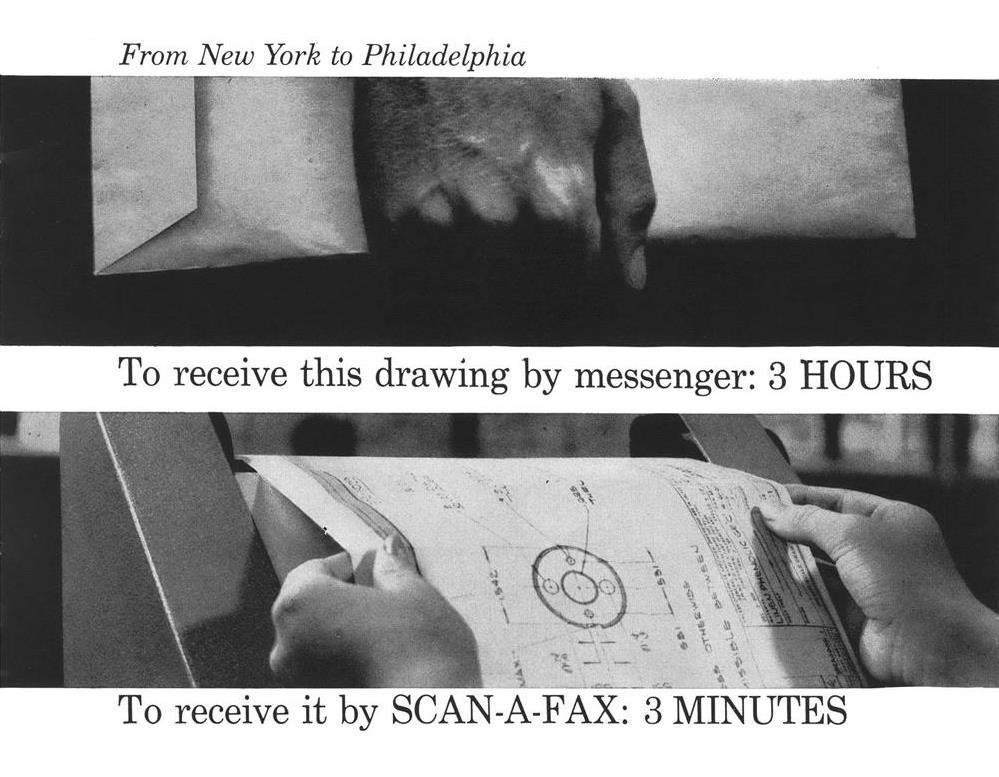
But for the regular schmo on the street, long distance calling is expensive…and Ma Bell wants you to make it a habit.



Thankfully, their switch to multi-frequency (MF) circuits, where operator-switched connections have been replaced by tone-controlled automatics, has proven quite the blessing, making Ma Bell more efficient, which has in some cases translated to reduced rates.


And for some people, it's resulted in absolutely phree phone calling…
You see, the phone system is controlled by tones, and the tones are consistent–and meticulously cataloged by the phone company in easy-to-obtain manuals. So if you can find some way of producing the tones yourself, you decide whether a call is going to cost money or not. Particularly if you have some way of producing, at the beginning of your call, the 2600 hz tone that indicates to the automatic system that a line is not being used, and therefore should not incur a bill.
If only there was some cheap, easy to find item that would enable you to do that…

That would be MF-ing great!
Broken Monopoly
It used to be that Analog, back when it was called Astounding, was the one game in town if you wanted what we now call "hard science fiction", that crunchy stuff based on real science, and not Buck Rogers stuff. Astounding editor John Campbell ushered in what folks are calling the Golden Age starting the end of the '30s.
It's now thirty years later, and Campbell's still around, and so's his magazine. Unlike the phone company, however, Campbell is content not to innovate, letting the latest trends in the field pass him by. The latest issue is a particularly regressive example.
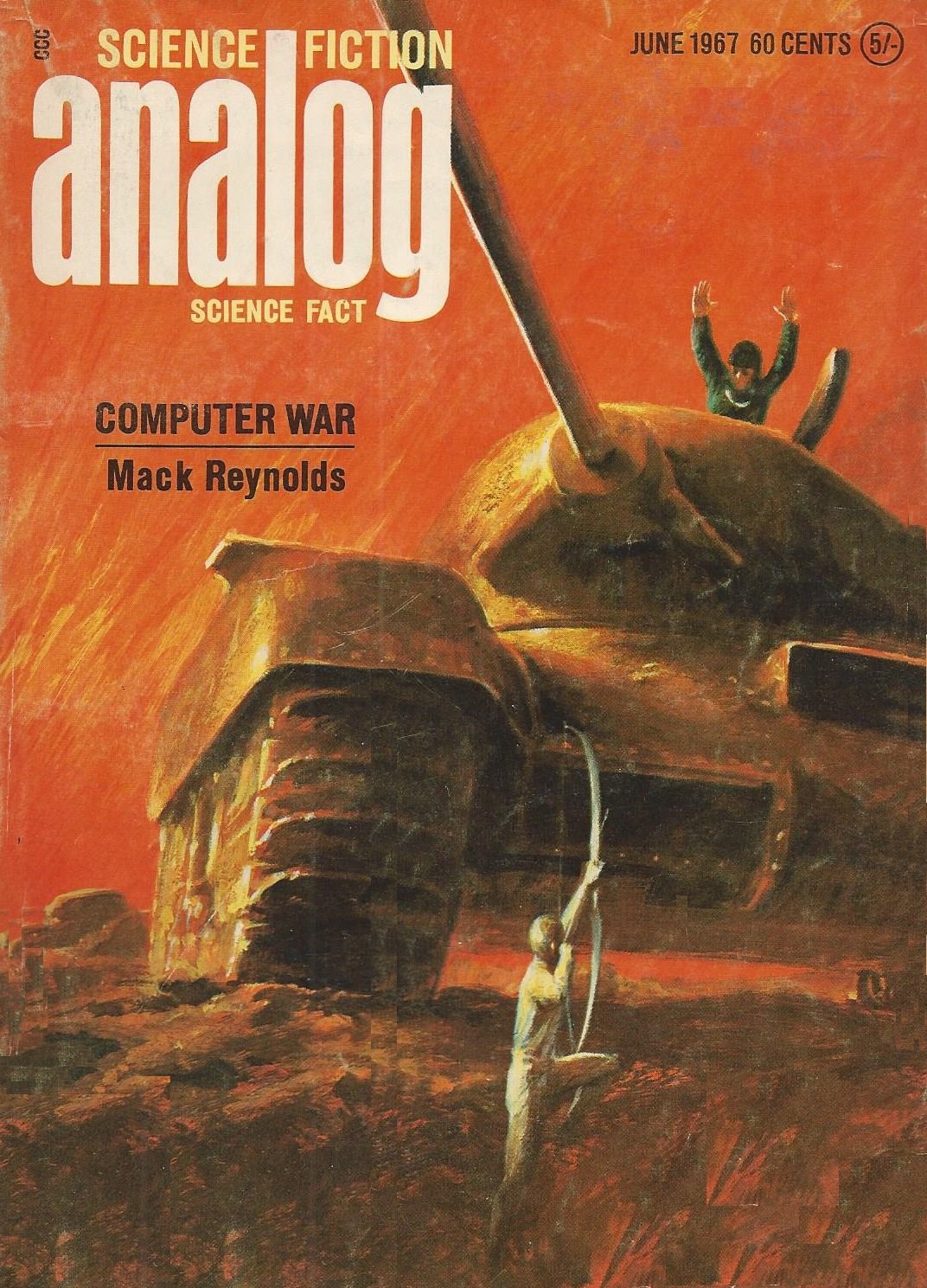
by John Schoenherr
Computer War (Part 1 of 2), by Mack Reynolds

by Kelly Freas
SF veteran and globetrotter Mack Reynolds has as one of his settings a future in which humanity has spread out to dozens, if not hundreds, of worlds, each free to develop its political institutions as it sees fit. Reynolds has used this backdrop as a way to explore several different types of government taken to extremes. For instance, most recently, he took us to a (seemingly) woman-dominated world in Amazon Planet, which turned out to be something of a paradise. I liked that one.
This particular story features a world with two main nations: Alphaland and Betastan. Between them are 21 neutral nations that don't count too much. The head of Alphaland is contemplating a war on Betastan, which though it will be costly, has been deemed necessary by the computerized statisticians if he is to maintain his grip on the totalitarian country. To get the populace behind the move, he concocts a "Crusade" againt the "Karlist Amish" minority that have corrupted Betastan and threaten to bring the whole world to heel.
Stop me if you've heard this one before.
Mixed in is a bit of political thriller involving a minister and his Betastani spy mistress. But for the most part, it's lukewarm historical allegory. Reynolds can be quite good at this kind of thing, but he's just going through the motions on this one.
Three stars so far, barely.
The Double-Edged Rope, by Lloyd Biggle, Jr.
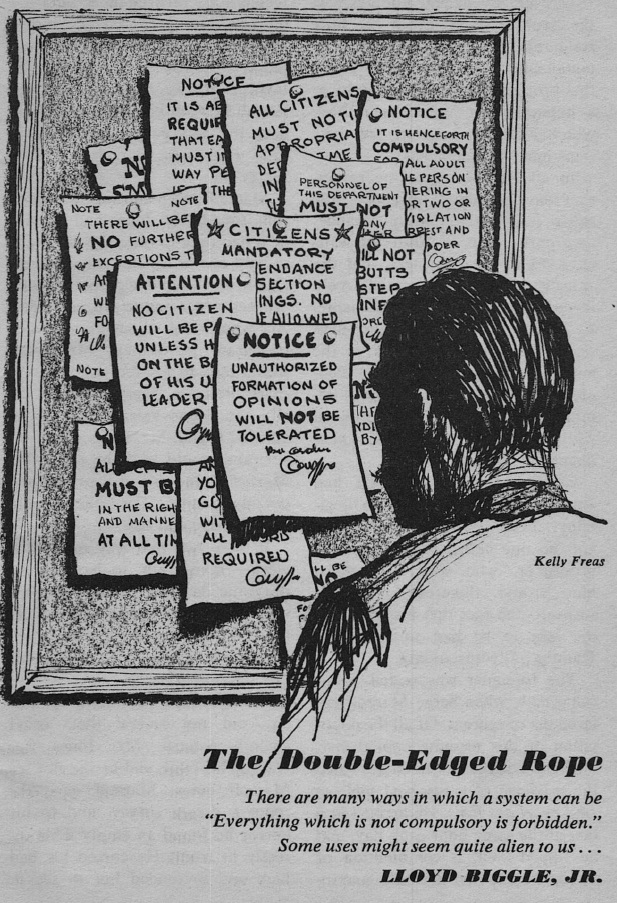
by Kelly Freas
East meets West in a Yugoslav greasy spoon as two agents swap stories of a rumored UFO invasion. When the Eastern spy goes to make his report, he finds that the BEMs-in-human-form have already taken over, betrayed by their signature stiff pinky fingers.

Oh wait, that's The Invaders. In this story, it's their really small ears.
Either way, it's a stupid story. Two stars.
Political Science, by Douglas M. Dederer
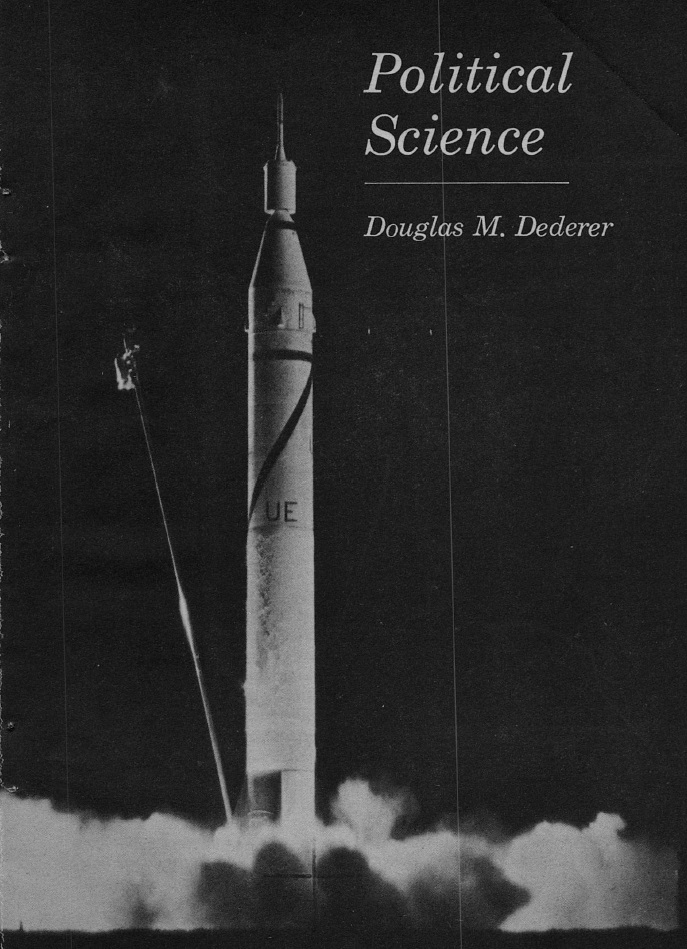
Newcomer Douglas Dederer offers us a detailed and exciting (if one-sided and slightly incomplete) account of how Von Braun's Army team didn't and then did become the first to orbit an American satellite. It's very pro-Nazi…er…Von Braun, and rather anti-Vanguard and Eisenhower, but I learned a lot.
Four stars.
Security Measure, by Joseph P. Martino
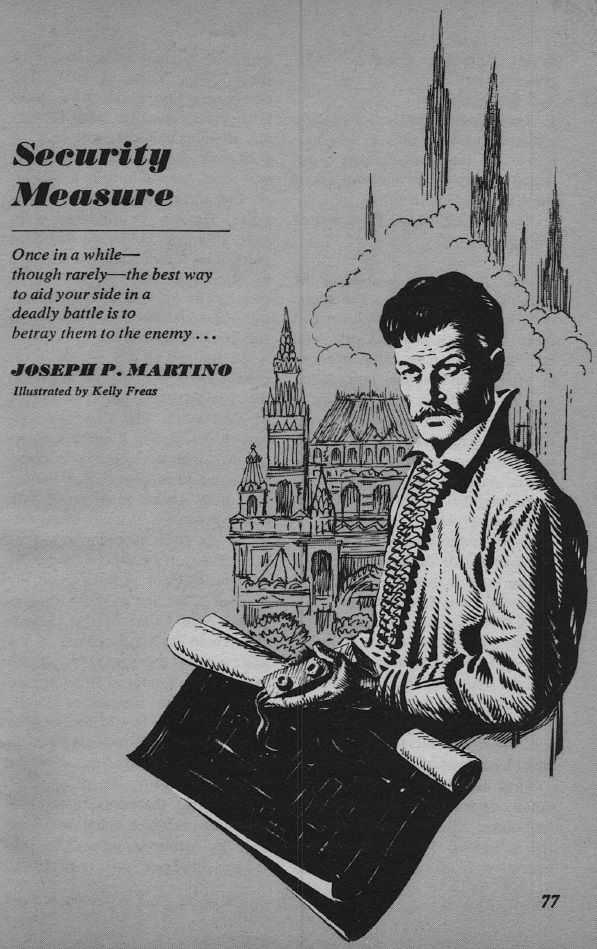
by Kelly Freas
A Russian-born American is inserted into the Soviet Union to survey any anti-revolutionary groups that might exist. Once he finds one, he finds himself hip deep in a plot to seize a nuclear missile base and atomize army garrisons around the country as a prelude to a massive internal takeover. Can Michael Antonov stop the plan before millions are vaporized?
Martino's written a lot of edge-of-the-future spy thriller stuff, generally exhibiting decent writing in otherwise trivial pieces. I quite liked this one, however. It feels quite grounded in reality, and the solution doesn't offend credulity or sensibility. If anything, Security Measure feels like an episode of Secret Agent.
Four stars.
Project Lion, by Lawrence A. Perkins

by John Schoenherr
Back down we go with this short piece about visitors from Procyon. The rulers of Earth are convinced that if they don't make first contact, they will be destroyed just like the Incans, the Neanderthals, and every other beaten culture of humanity that got off the second shot. A scramble is made to select the optimum personnel for such a mission.
This story really doesn't make any sense, neither the "logic" involved in the puzzle nor the puzzle's solution.
Two stas.
The Dukes of Desire, by Christopher Anvil
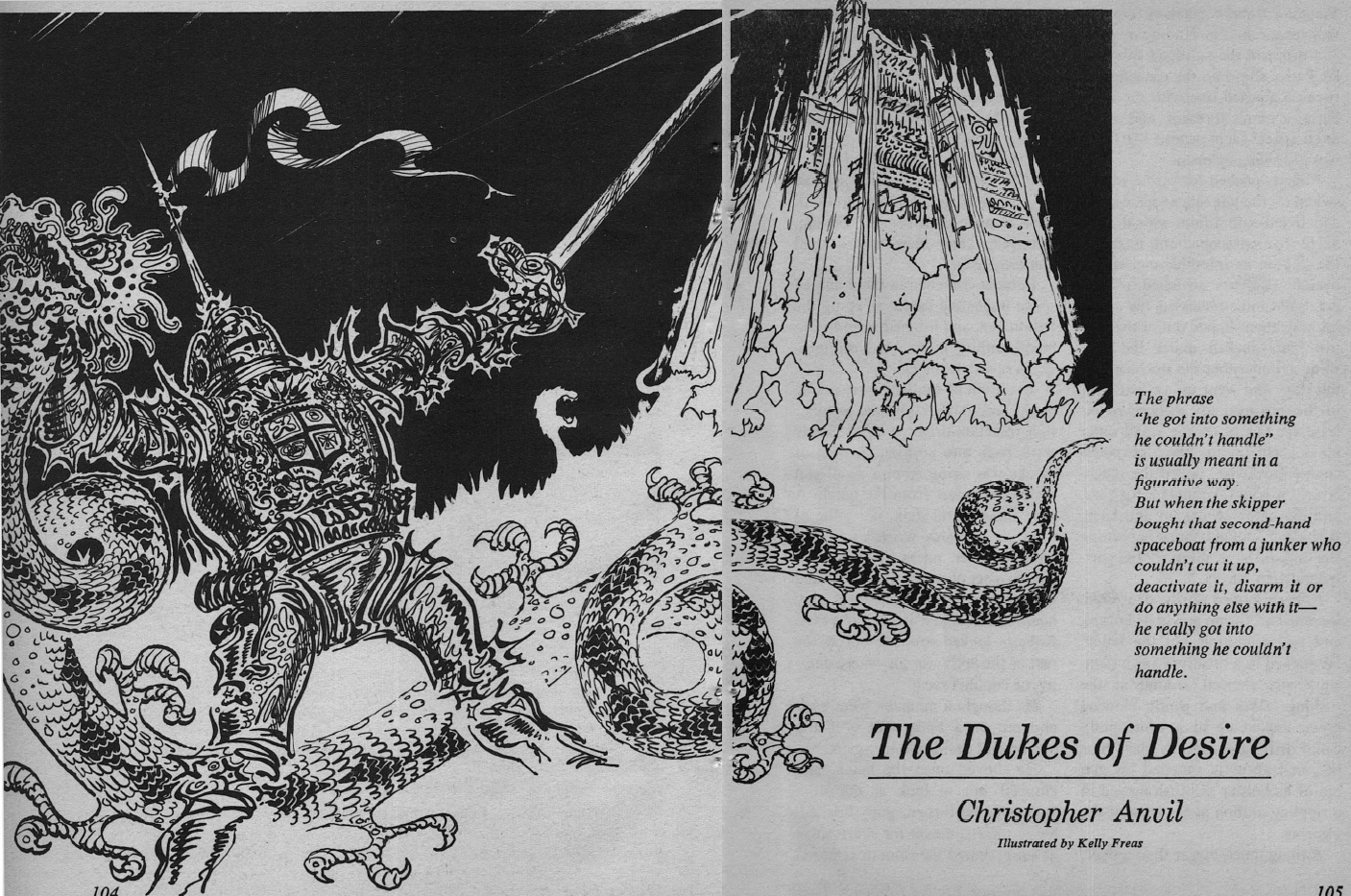
by Kelly Freas
Several months ago, we followed the exploits of a three-man team trapped on a planet under the thumb of robot overlords in Strangers to Paradise. They overcame their difficulties through the use of mind control through scents.
Well, now the team is back. The planet has fallen further into anarchy, and the trio have to figure out a way to put things to rights. A combination of scent application and false identity does the trick, making the planetary population believe that the two ships flown by the trio are actually flagships in an interstellar war. The idea is that an external foe might unite the people of the planet. Or something.
I didn't much like the last story, and I really didn't like this one, even if my nephew, David, sang its praises.
Two stars.
Tallying the Bill

At 2.8 stars, the latest Analog definitely ends up near the bottom of the pack this month, only beating out the perennially puny Amazing (2.2). Scoring better were Fantasy and Science Fiction and If (3.2), with Galaxy sitting on top with 3.3 stars, mostly thanks to the new Niven novella. There was but one woman-penned piece the entire month, and that done under initials.
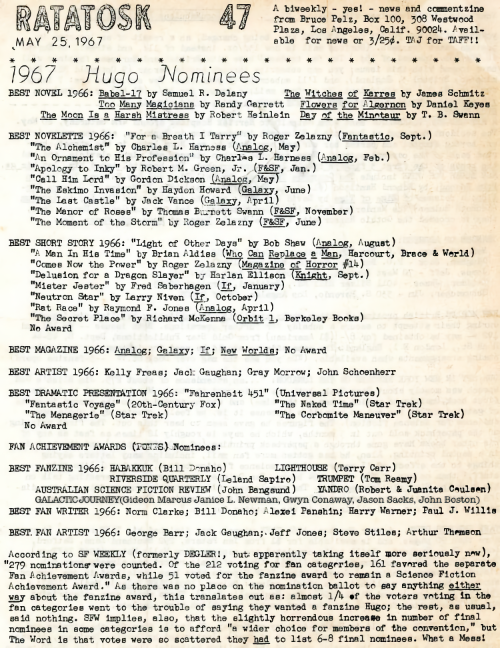
We did get some bright news this month–apparently Galactic Journey has finally made the Hugo ballot after several years of dashed hopes. So there's the possibility we may actually come home from Nycon with the big rocket ship.
And that would be something to phone about! On Sunday, when the rates are cheaper…
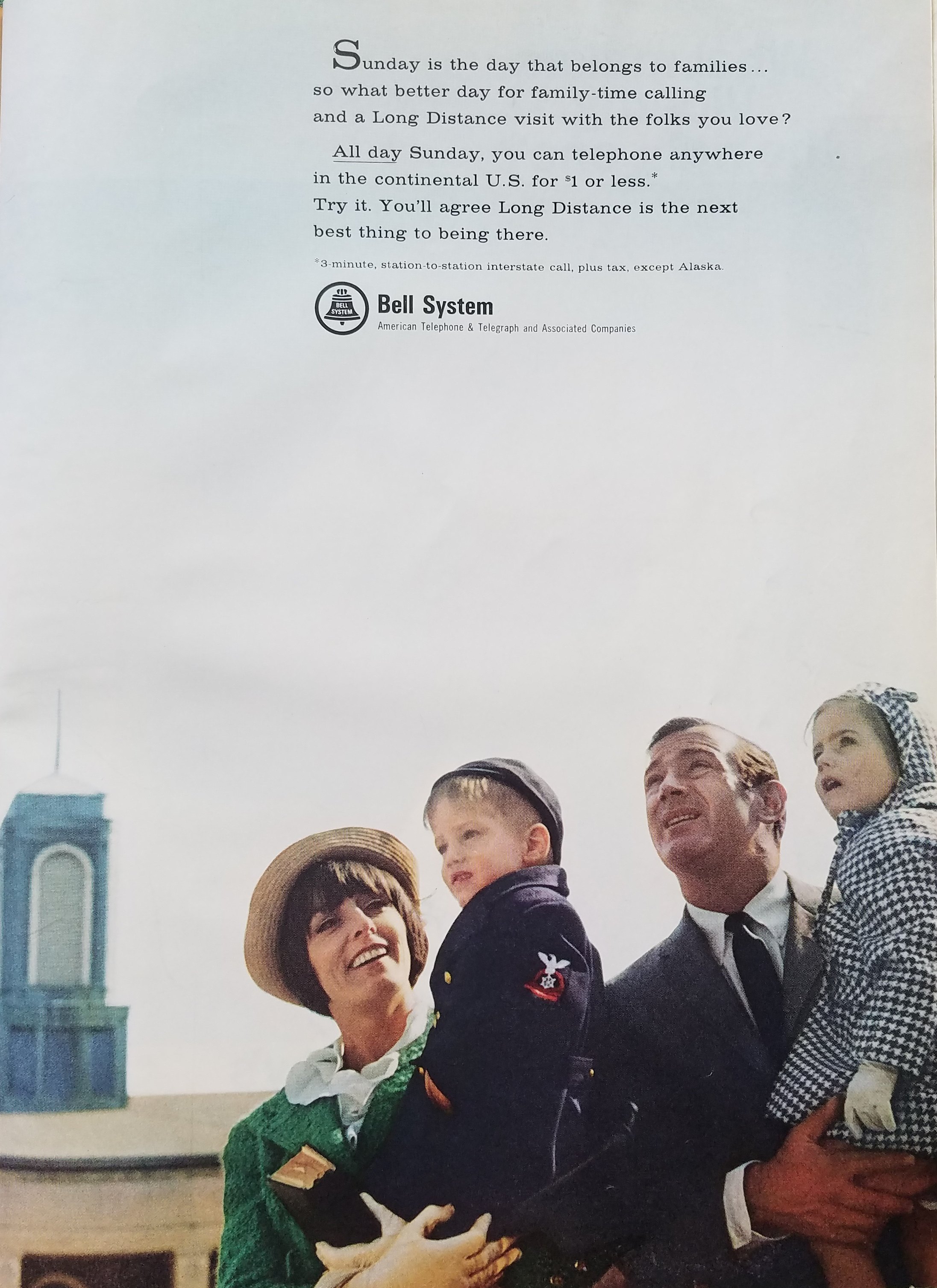

![[May 31, 1967] Phoning it in (June 1967 <i>Analog</i>)](https://galacticjourney.org/wp-content/uploads/2022/05/670531cover-672x372.jpg)

![[May 20, 1967] Field trips (June 1967 <i>Fantasy and Science Fiction</i>)](https://galacticjourney.org/wp-content/uploads/2022/05/670520cover-449x372.jpg)



![[May 12, 1967] There and Back Again (June 1967 <i>Galaxy</i>)](https://galacticjourney.org/wp-content/uploads/2022/05/670512cover-672x372.jpg)







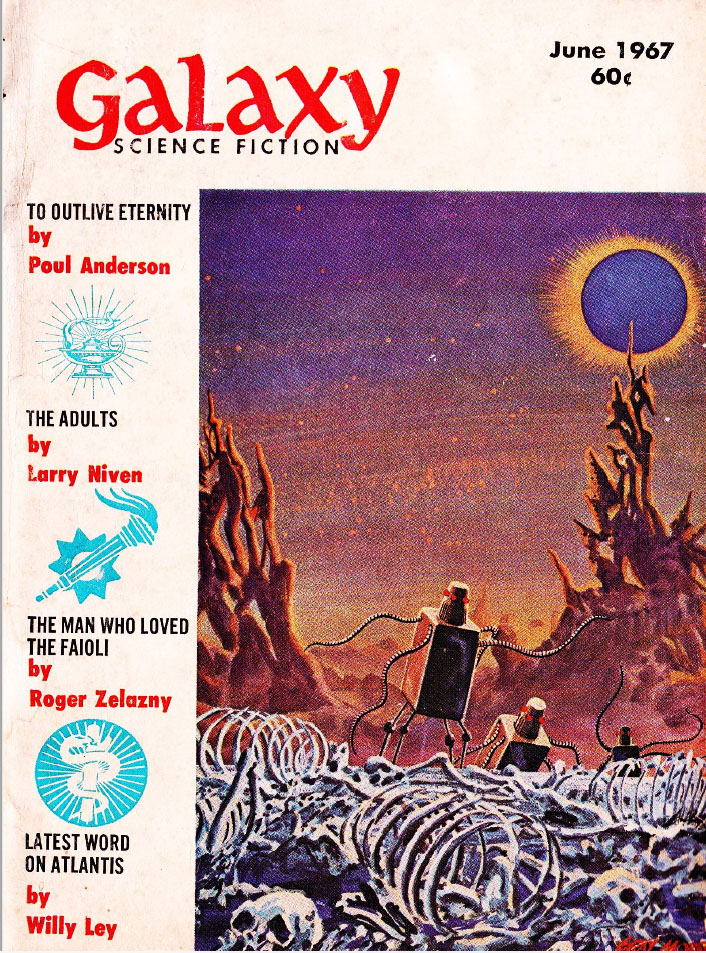

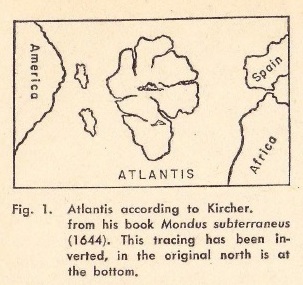


![[May 6, 1967] Stirred? Shaken? (June 1967 <i>Amazing</i>)](https://galacticjourney.org/wp-content/uploads/2022/05/amz-0667-cover-504x372.png)

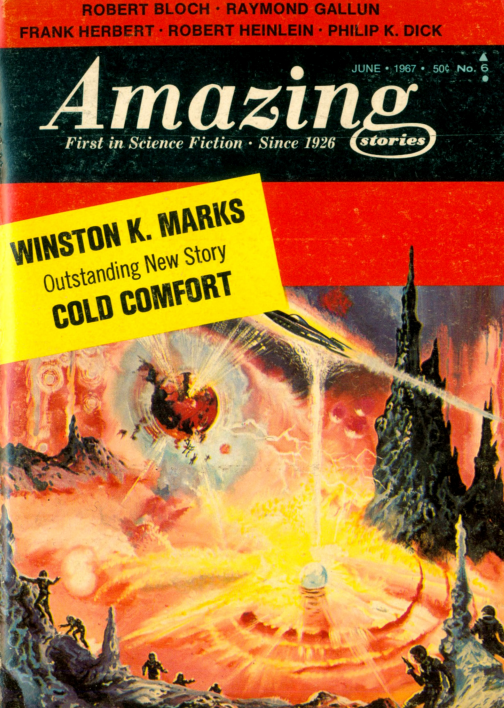

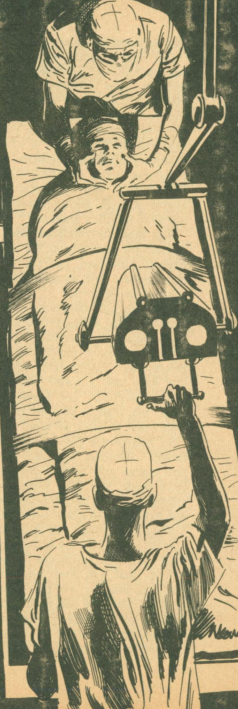
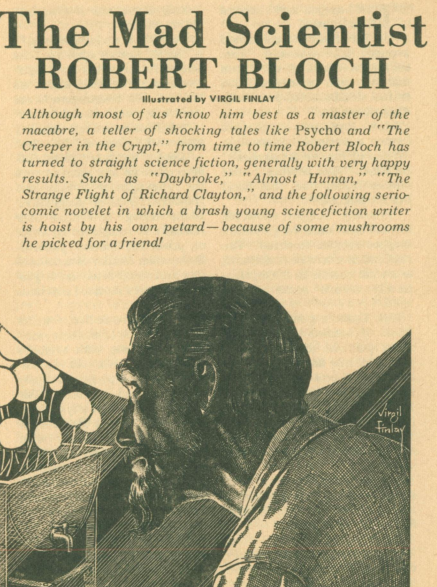
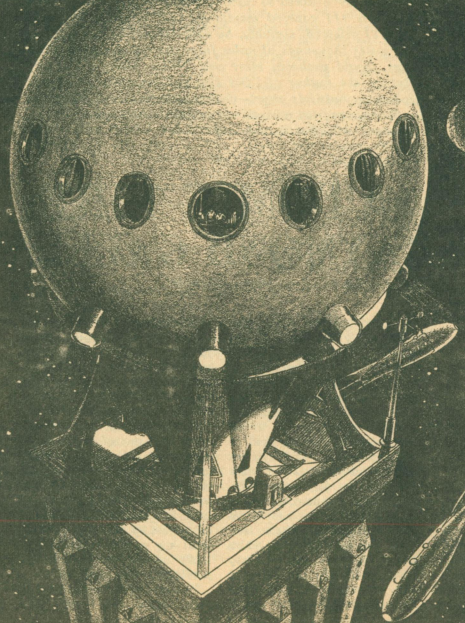
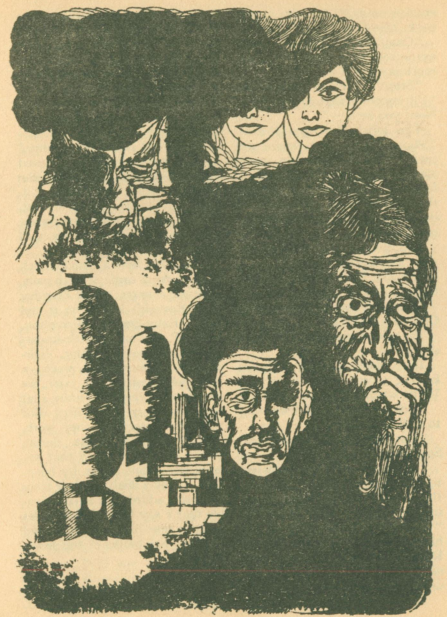
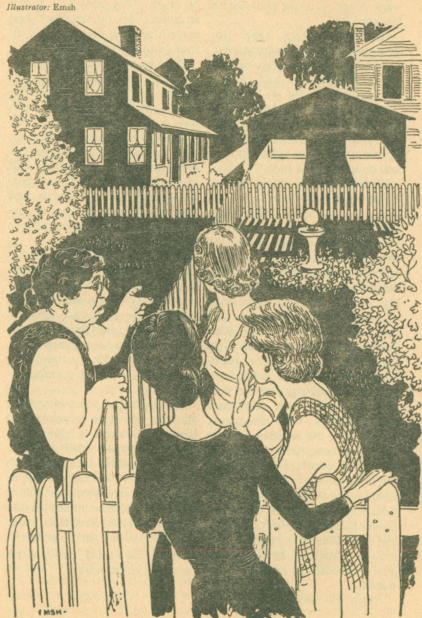
![[May 2, 1967] The Call of Duty (June 1967 <i>IF</i>)](https://galacticjourney.org/wp-content/uploads/2022/04/IF-Cover-1967-06-672x372.jpg)

 Muhammad Ali is escorted from the induction center in Houston, Texas.
Muhammad Ali is escorted from the induction center in Houston, Texas. 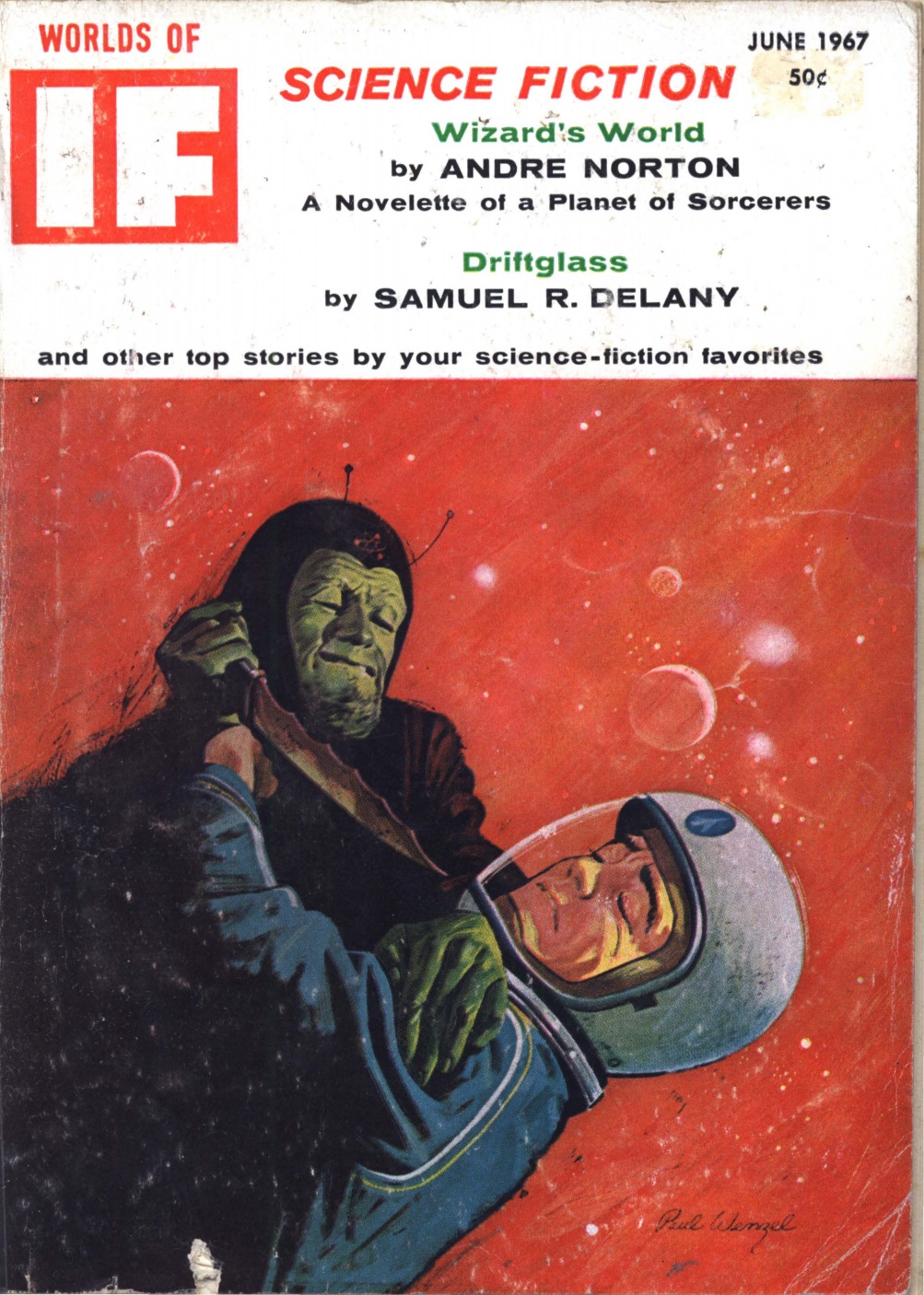 Uncle Martin and Tim (from My Favorite Martian) seem to have had a falling out. Actually, this is supposedly from Spaceman!
Uncle Martin and Tim (from My Favorite Martian) seem to have had a falling out. Actually, this is supposedly from Spaceman!![[April 30, 1967] Strange New Worlds and Staid Old Ones (May 1967 <i>Analog</i>)](https://galacticjourney.org/wp-content/uploads/2022/04/670430cover-672x372.jpg)
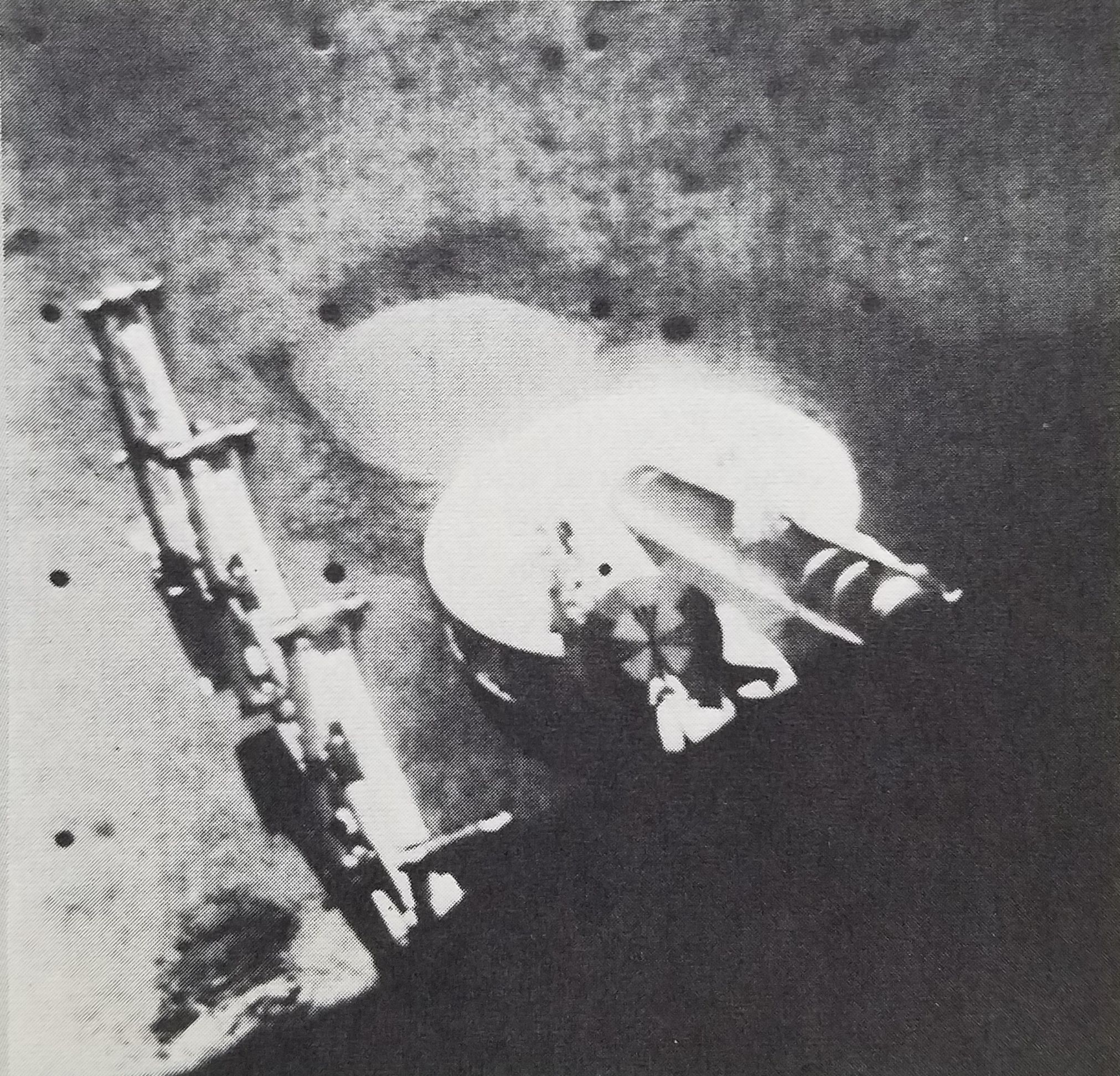

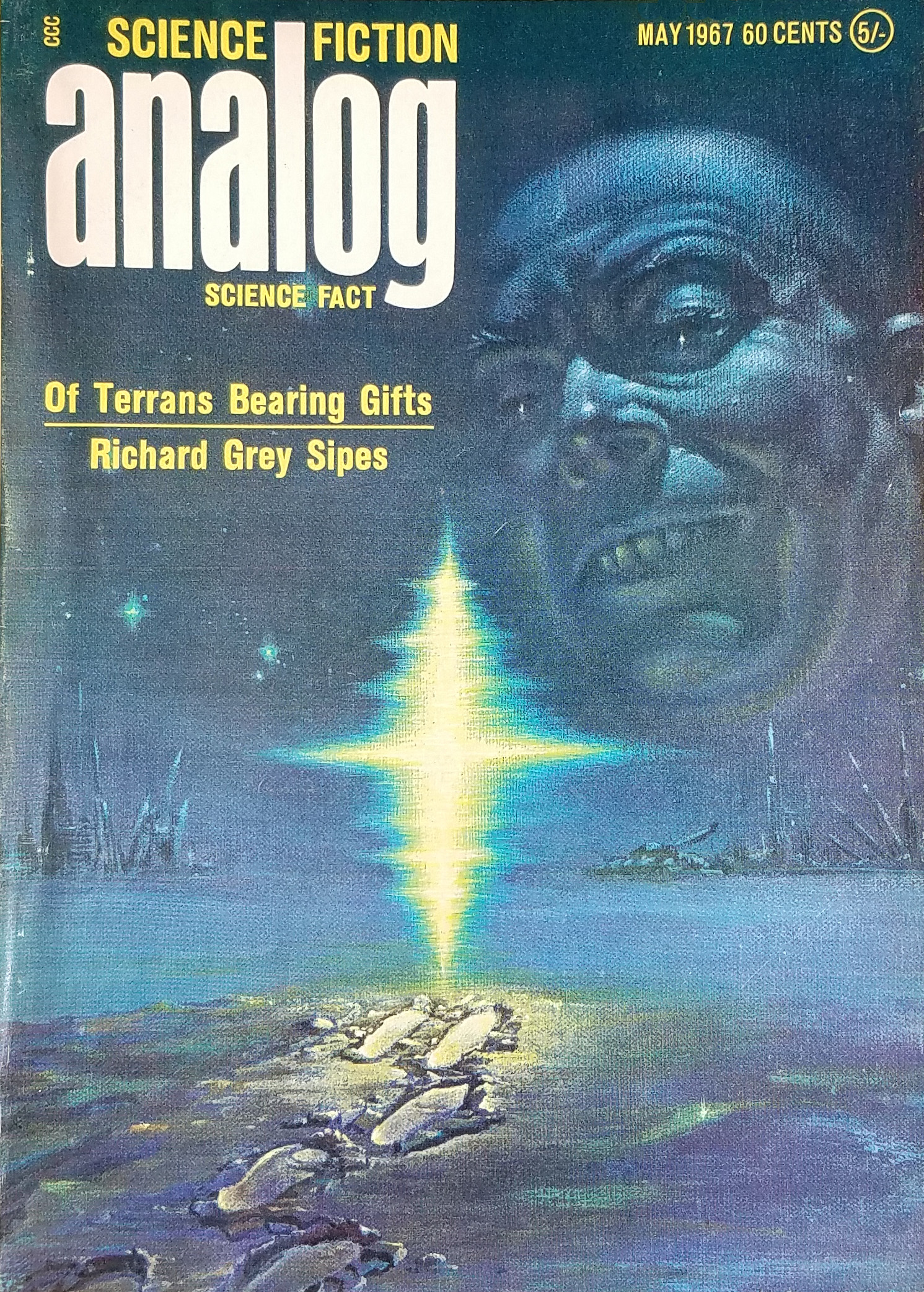

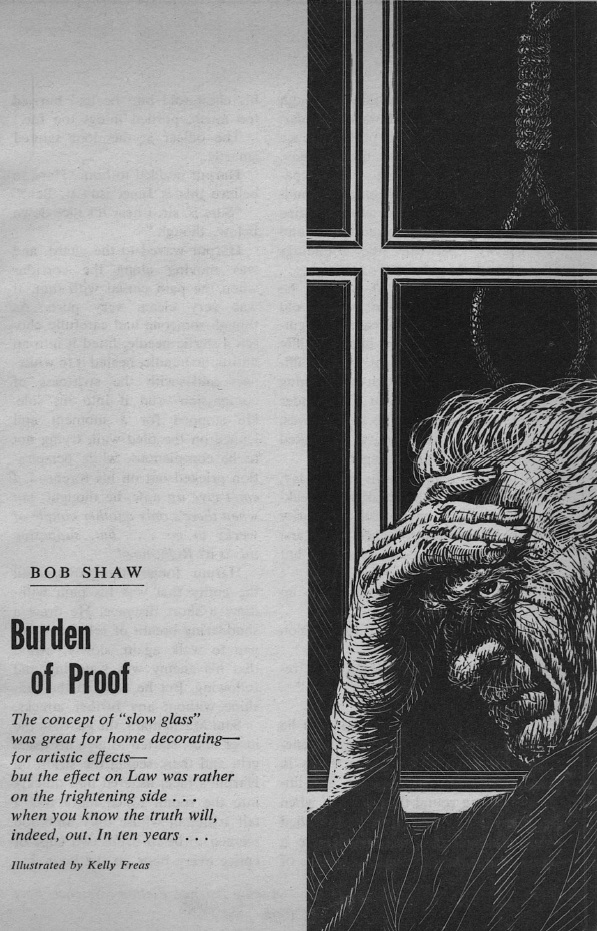
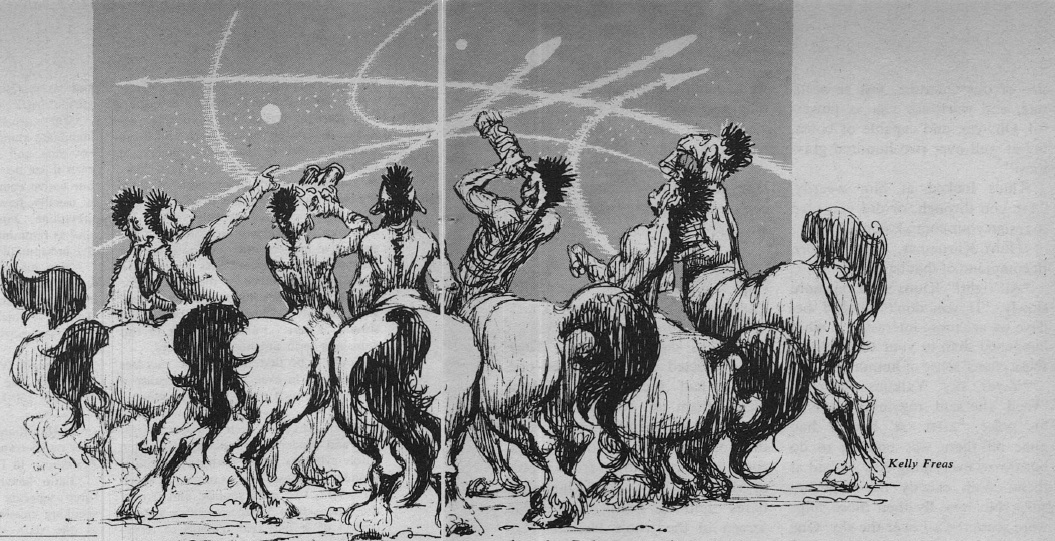
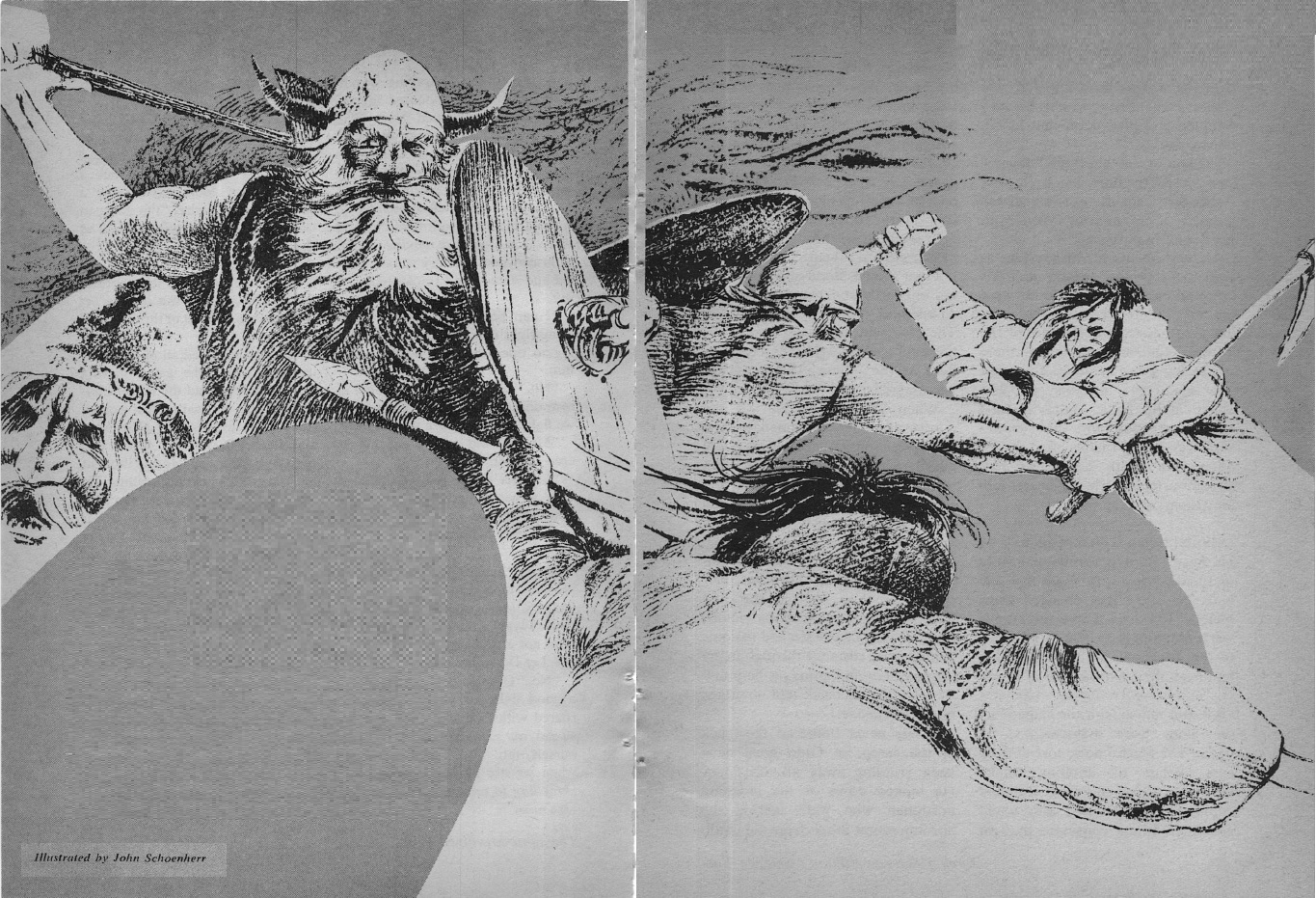


![[April 18, 1967] Bright Lights (May 1967 <i>Fantasy and Science Fiction</i>](https://galacticjourney.org/wp-content/uploads/2022/04/670418cover-672x372.jpg)



![[April 16, 1967] The Generation Gap (May 1967 <i>Fantastic</i>)](https://galacticjourney.org/wp-content/uploads/2022/03/Fantastic_v16n05_1967-05_0000-2-672x372.jpg)



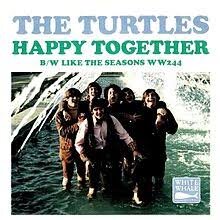

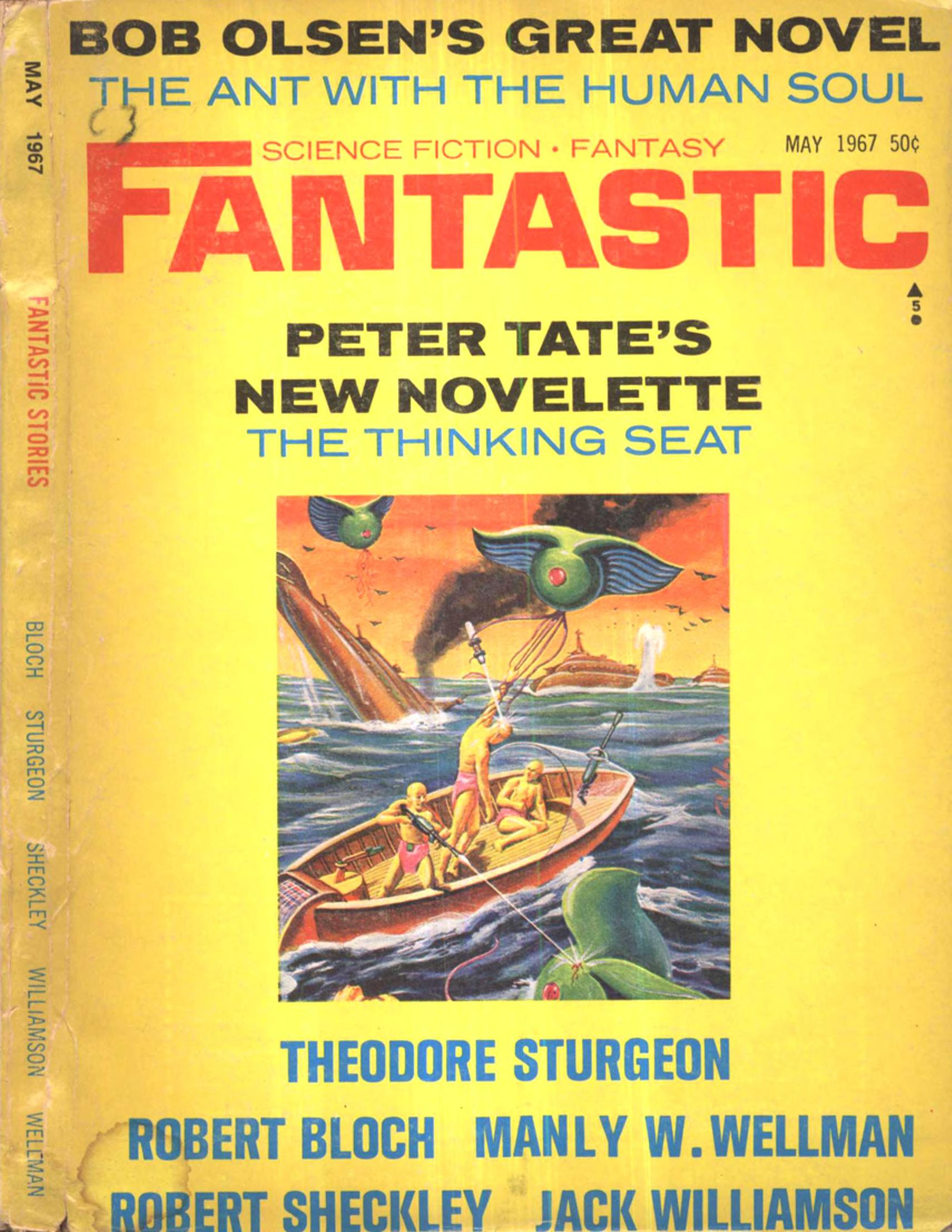
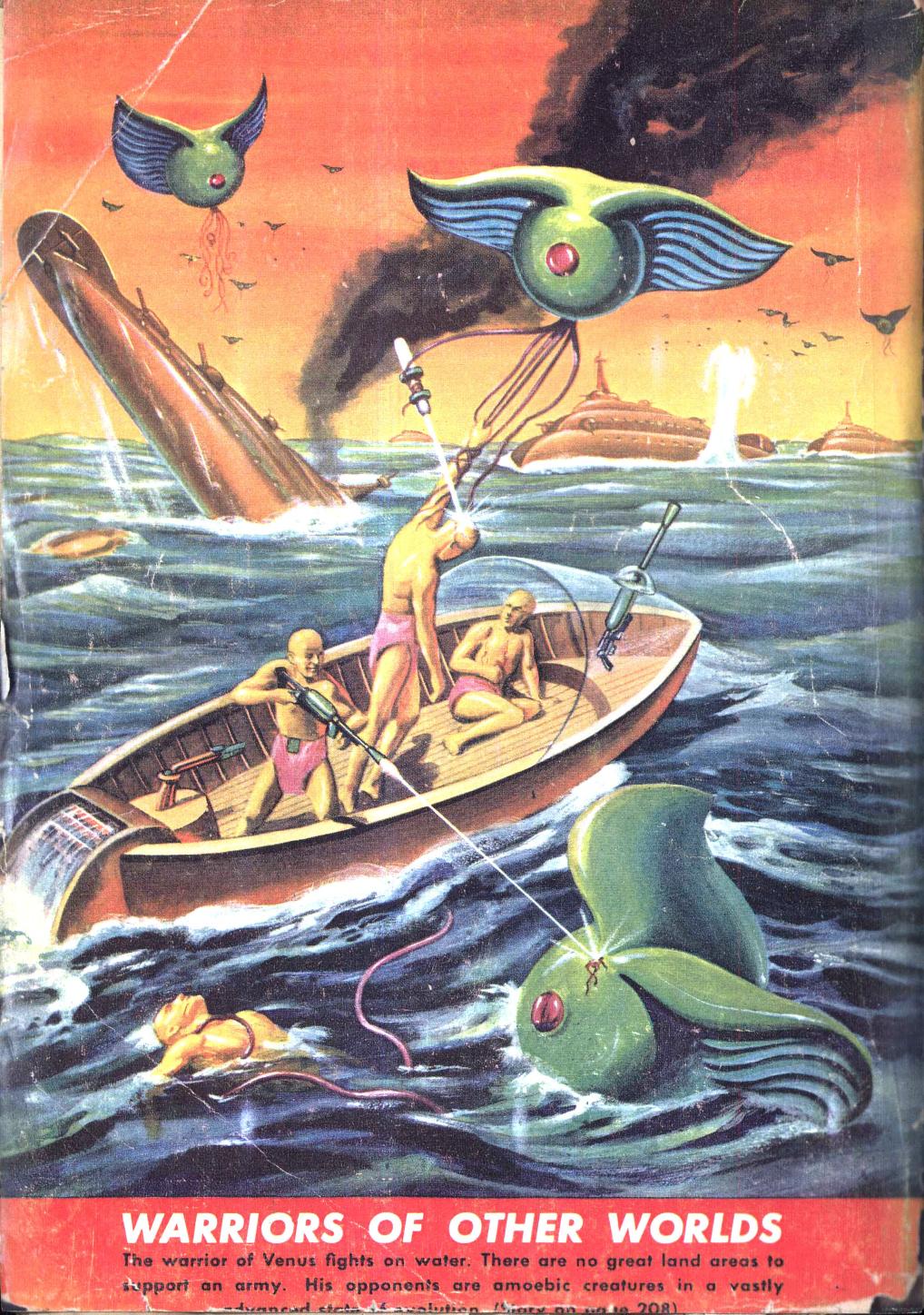

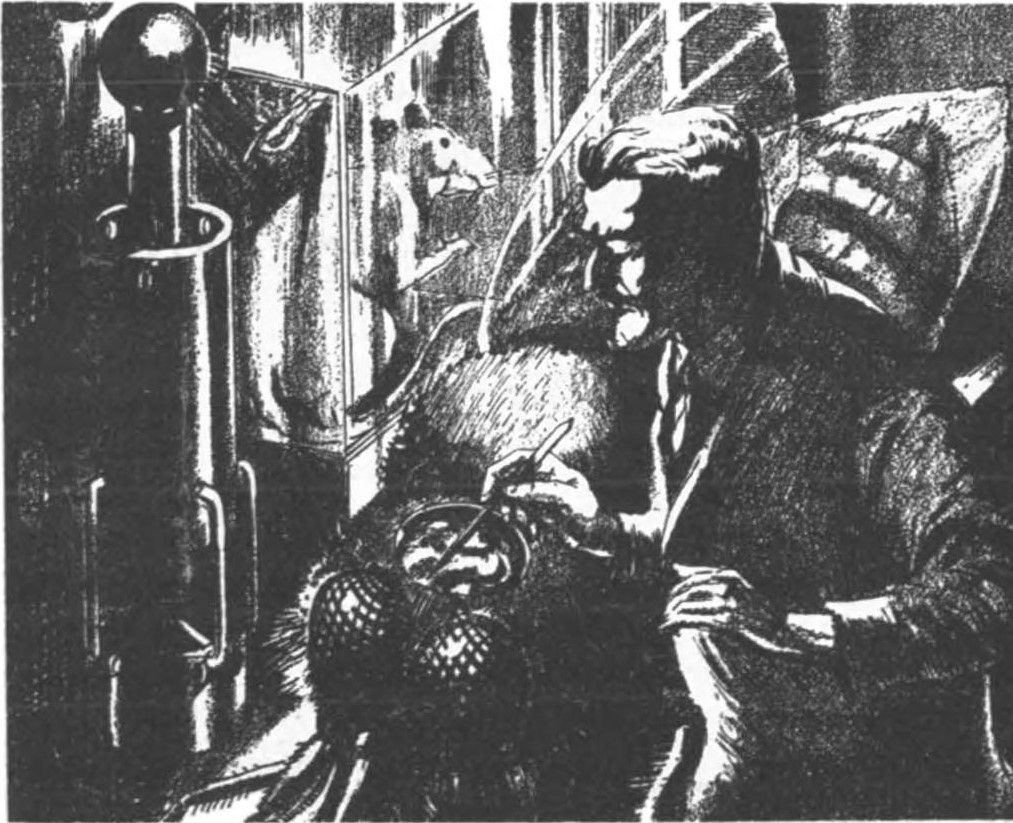
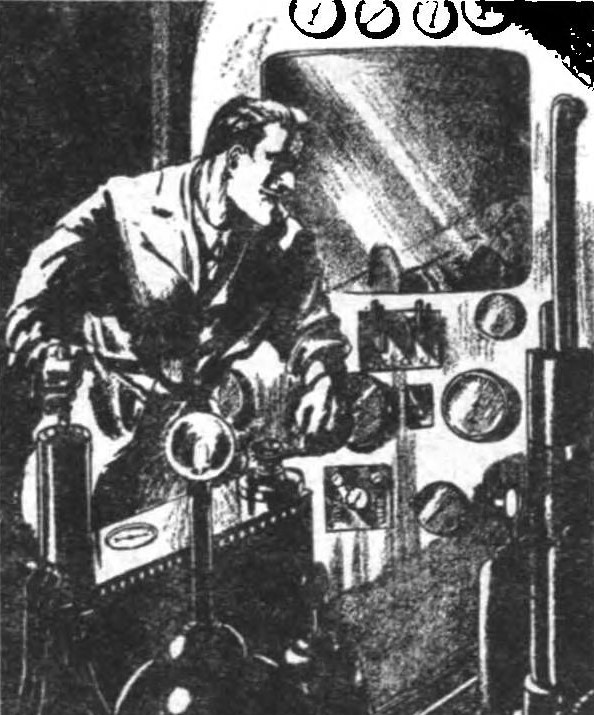
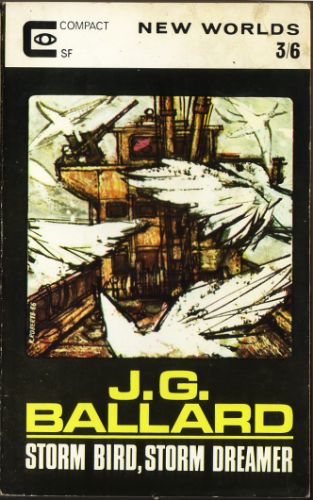
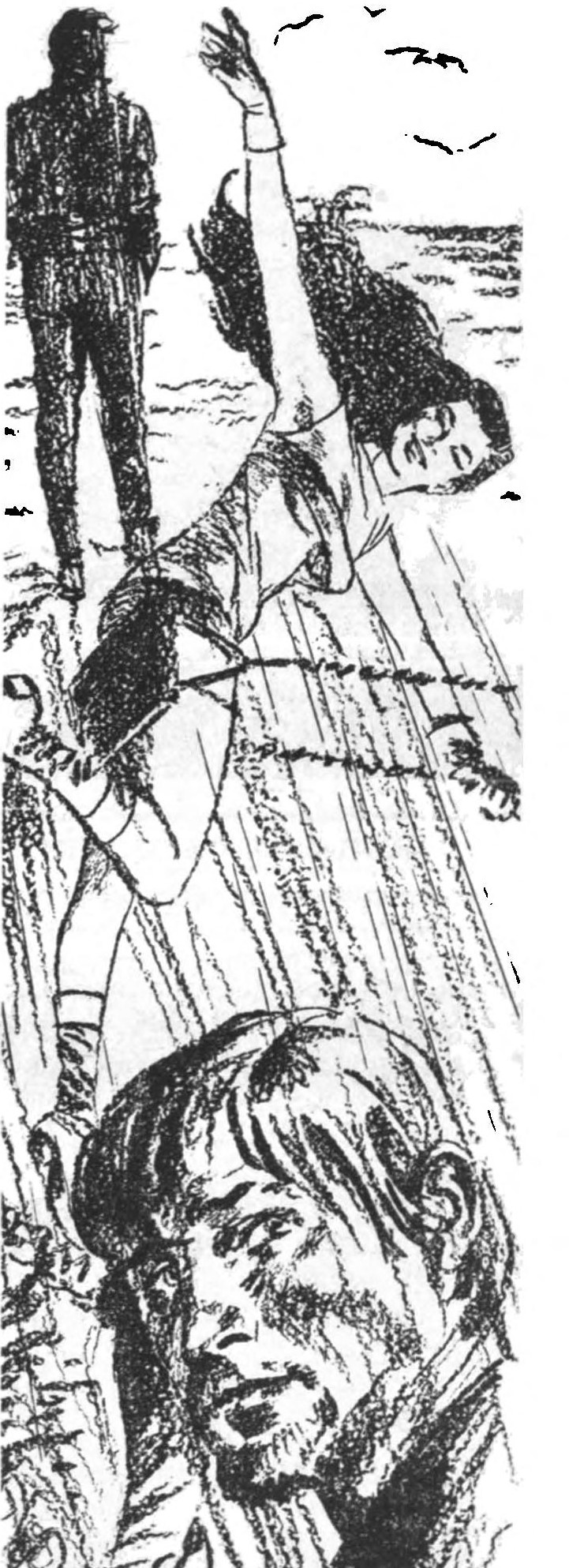



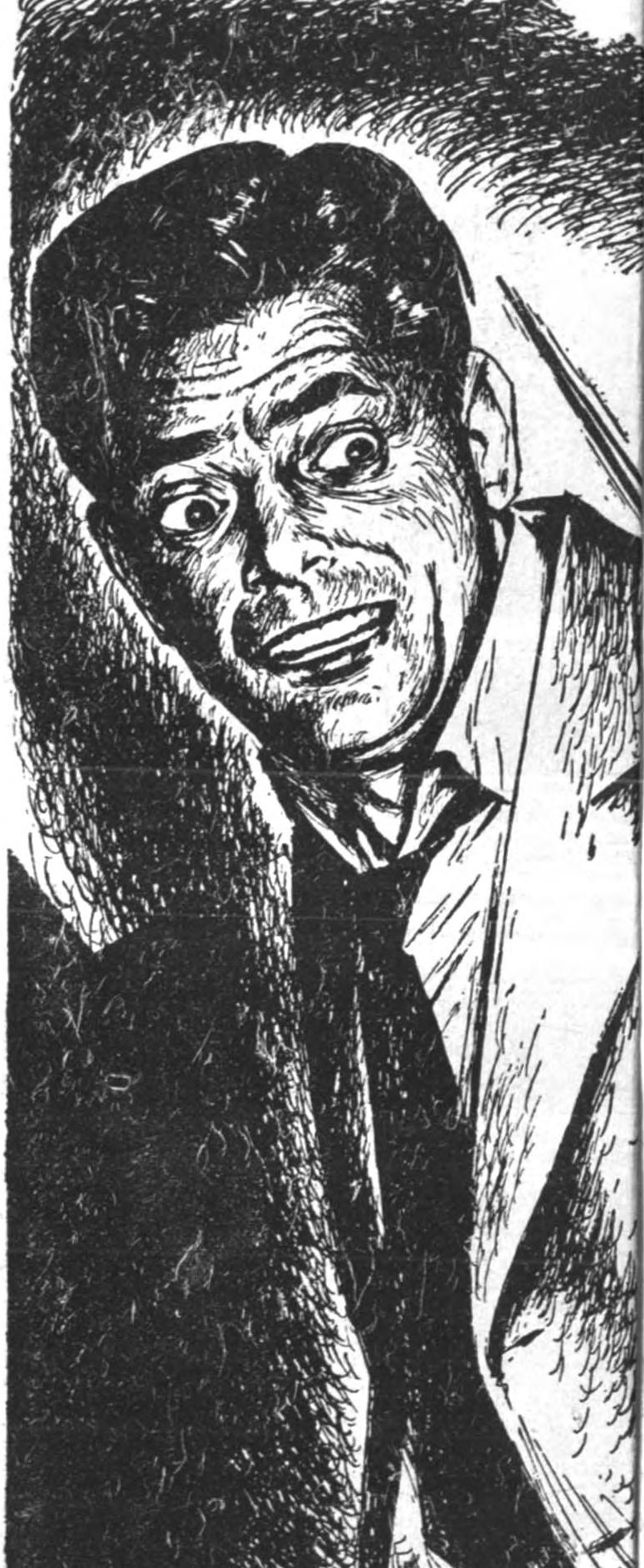

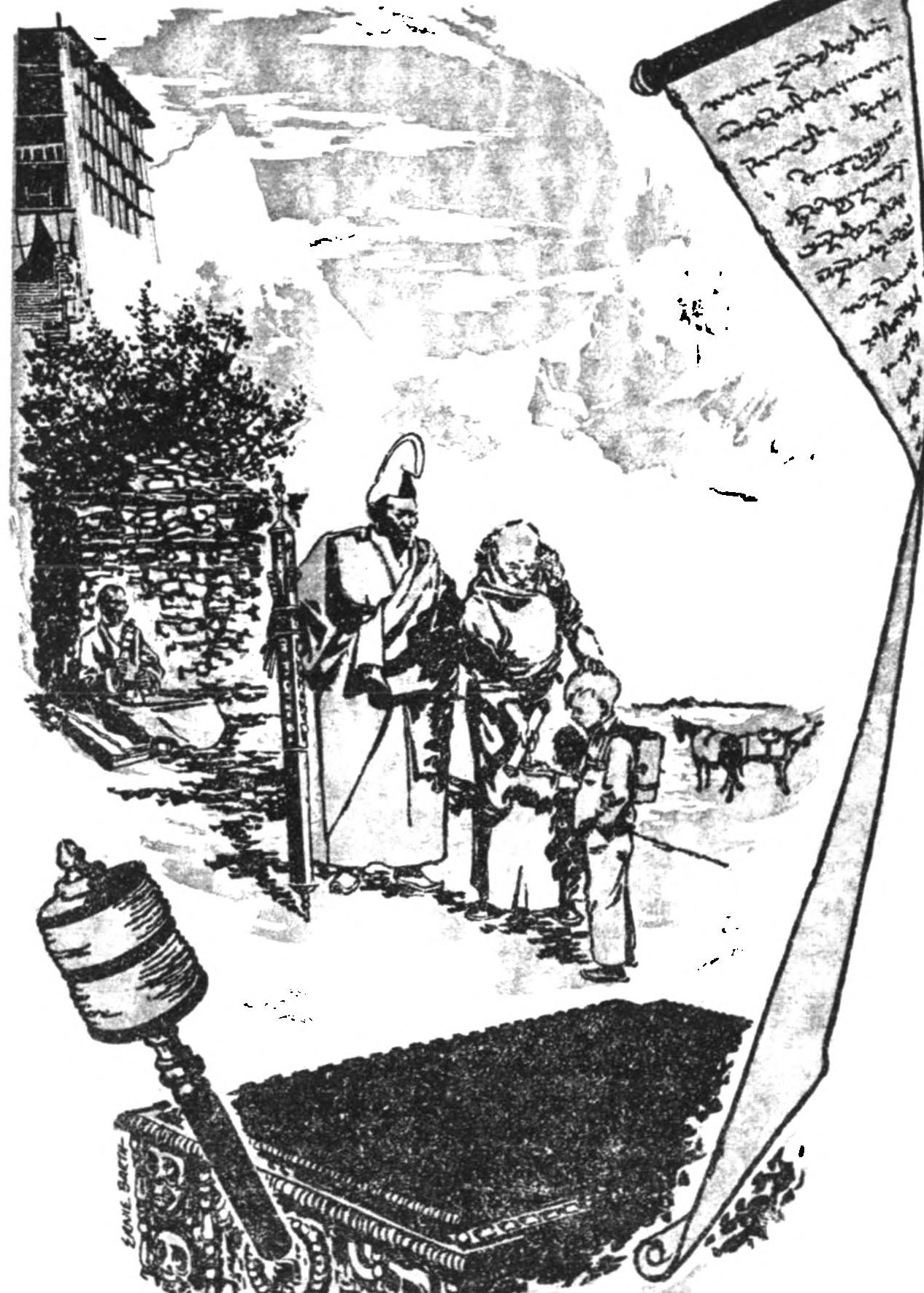
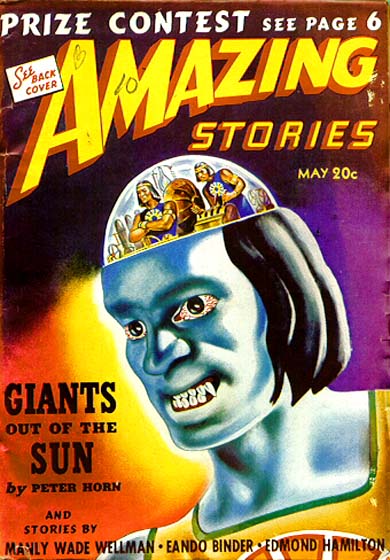




![[April 8, 1967] Swan Songs (May 1967 <i>Worlds of Tomorrow</i>)](https://galacticjourney.org/wp-content/uploads/2022/03/Worlds_of_Tomorrow_v04n04_1967-05_0000-2-672x372.jpg)



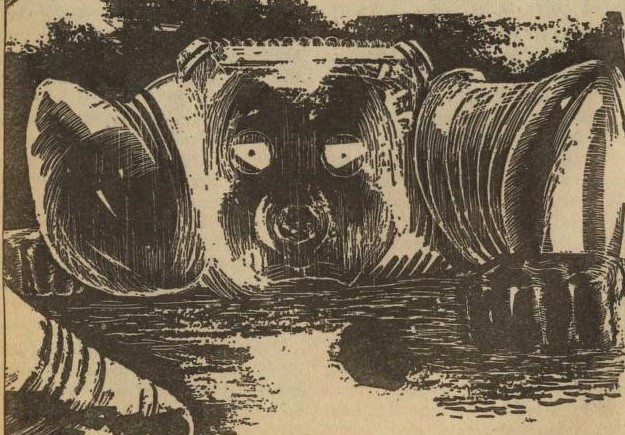
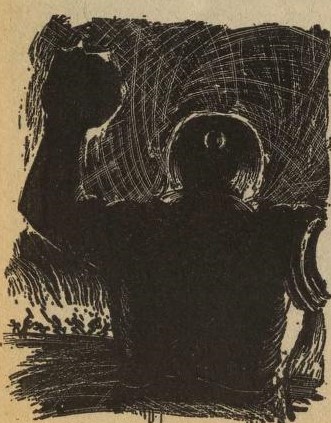

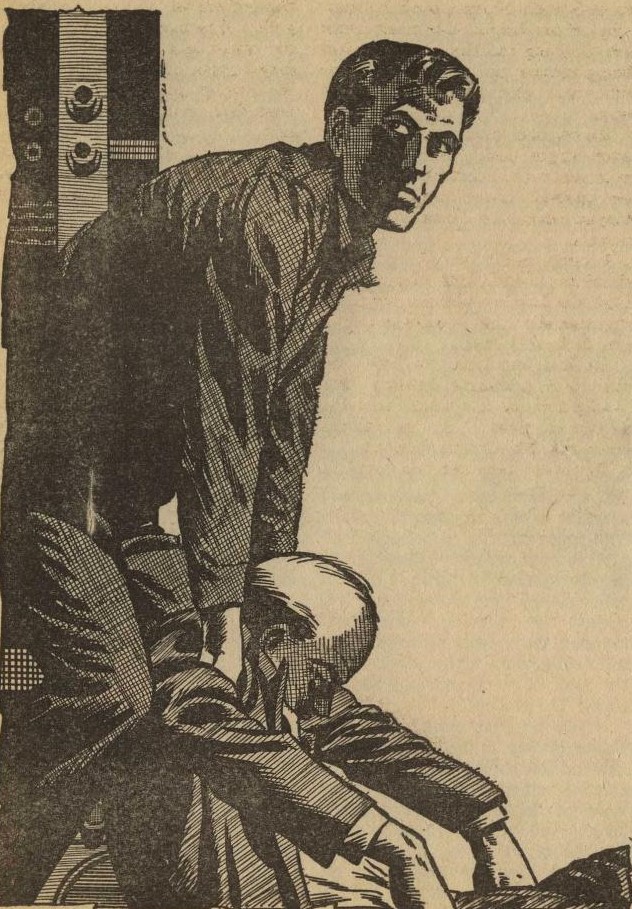
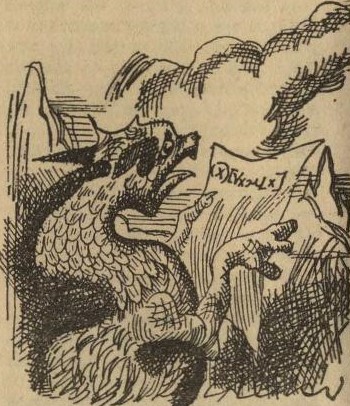

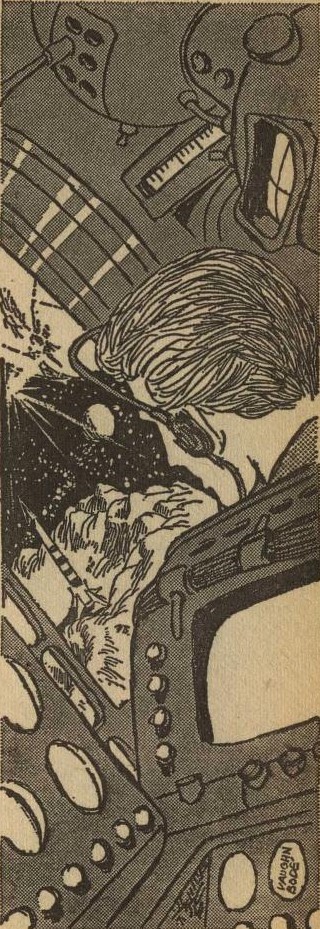
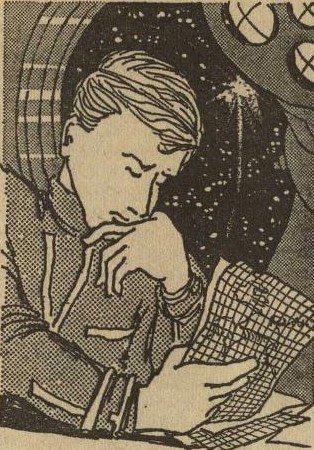


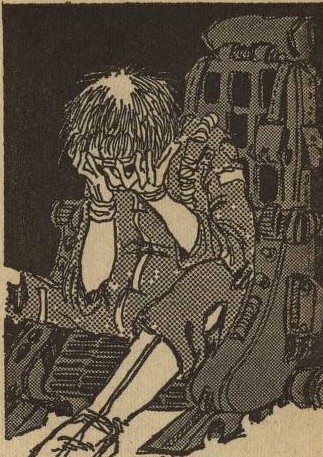

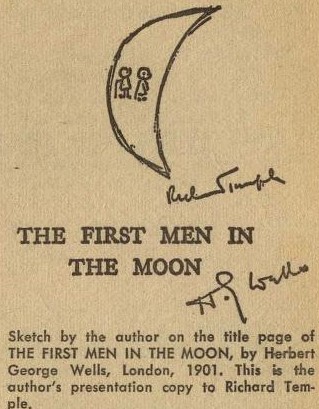

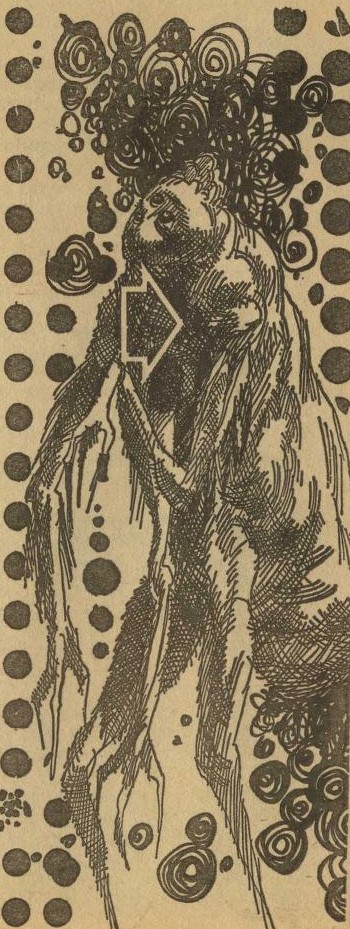
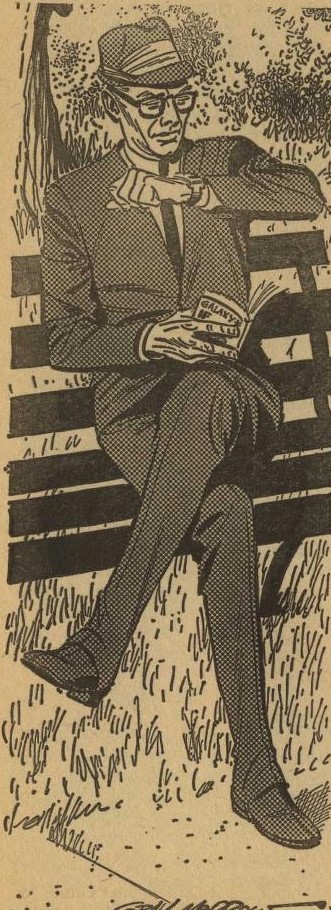





![[April 4, 1967] Transitions (May 1967 <i>IF</i>)](https://galacticjourney.org/wp-content/uploads/2022/03/IF-Cover-1967-05-672x372.jpg)

 What are these robots up to? Art by Gaughan
What are these robots up to? Art by Gaughan